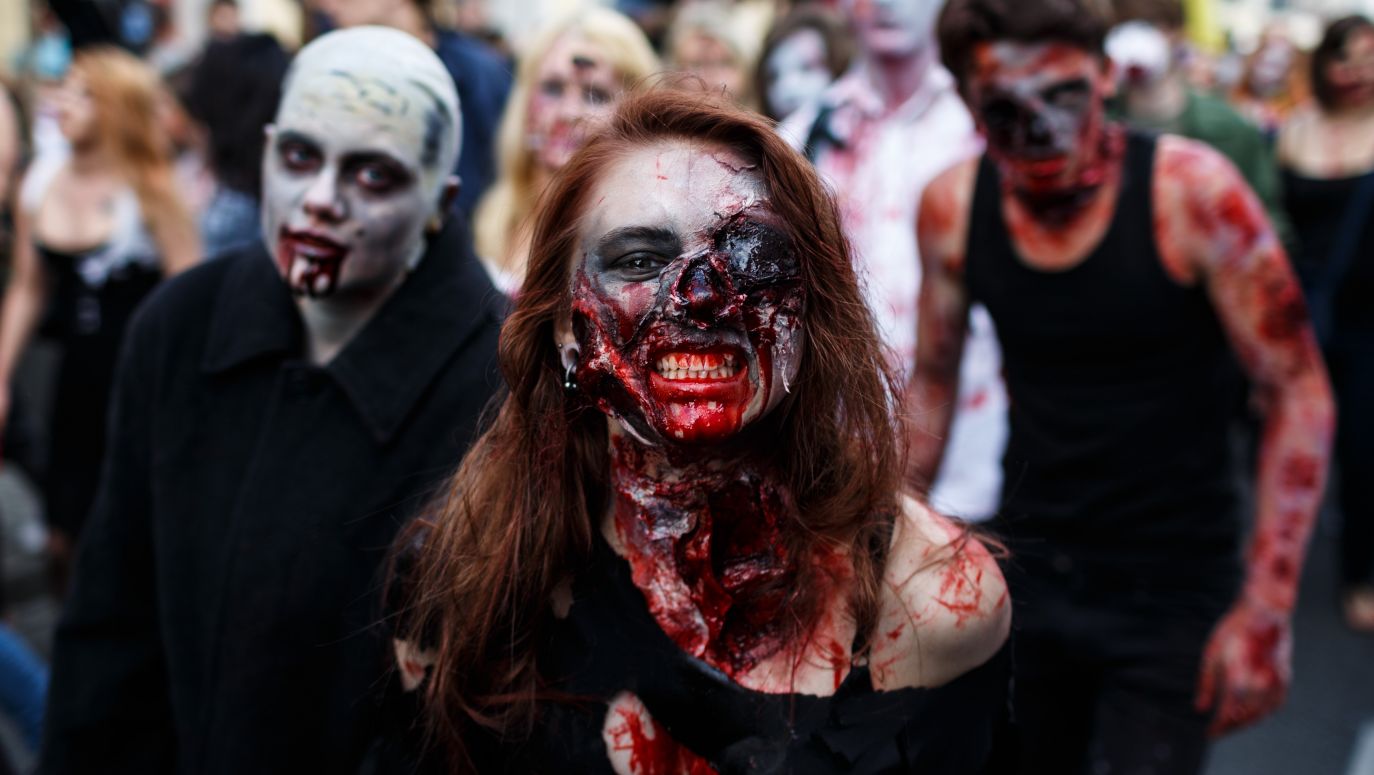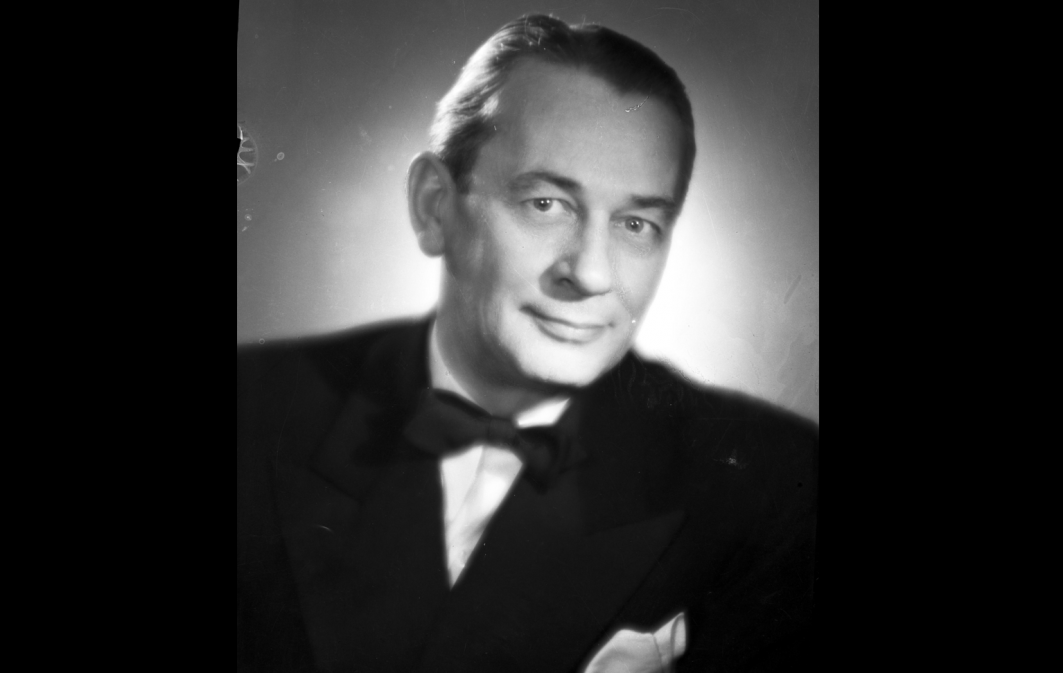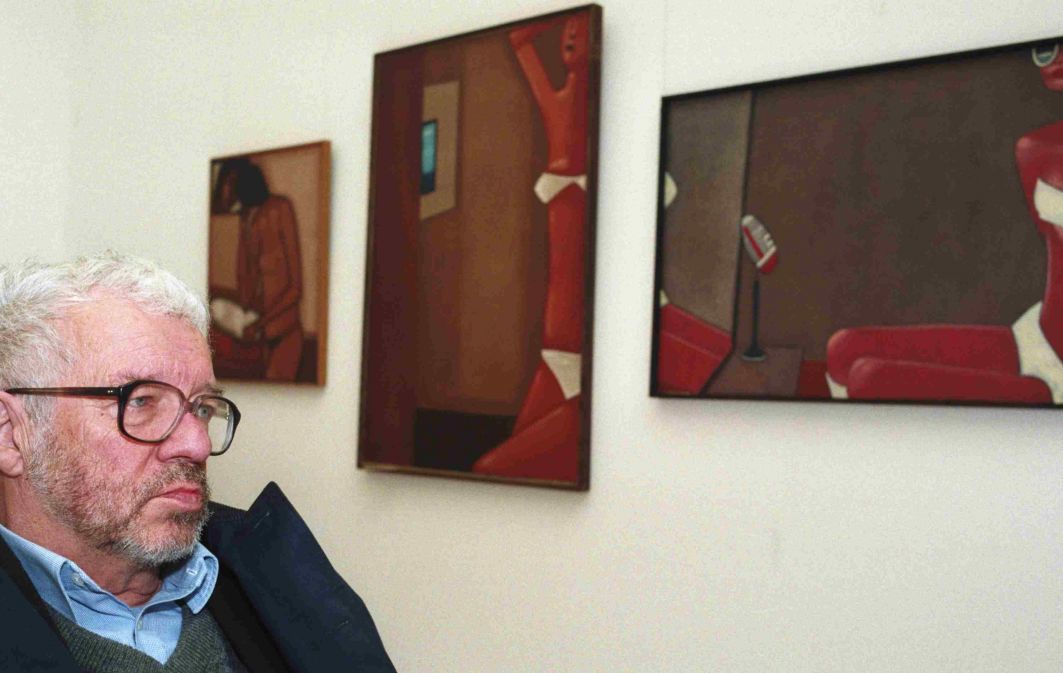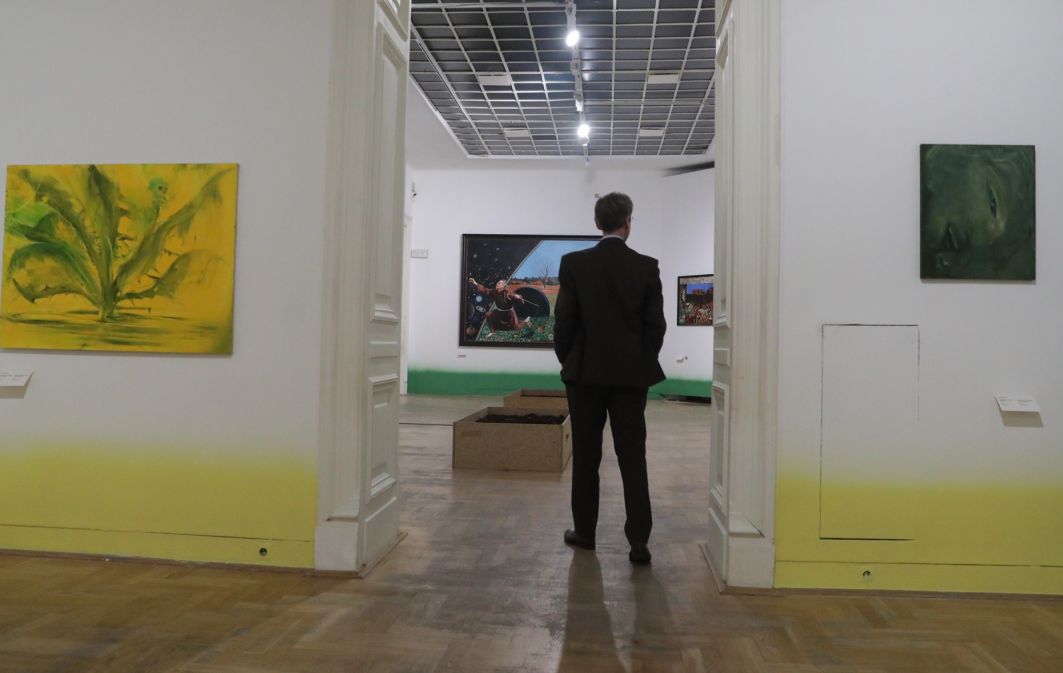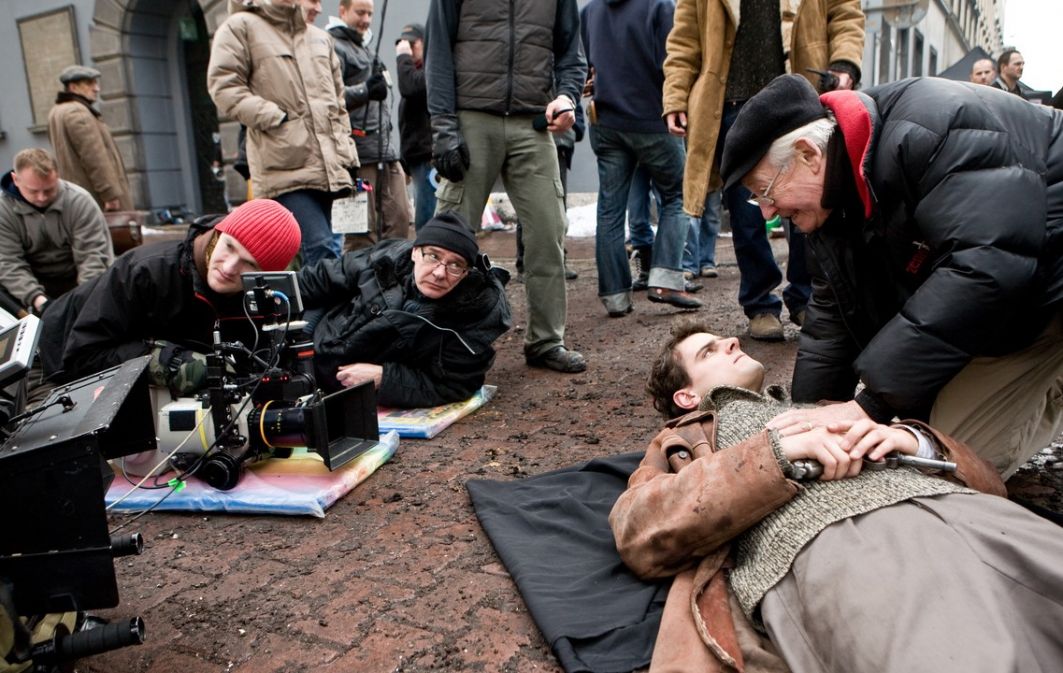It was the last Saturday in June 2015. A crowd of 'living dead', covered in fake blood, glare menacingly at passers-by with bulging eyes, 'decorated' with scabs and scars to emphasise the atmosphere of horror, marched through the streets of Warsaw. It set off from under the Palace of Culture, continuing along Chmielna, Nowy Świat and Krakowskie Przedmieście streets. At Castle Square, a team of commandos armed with rifles awaited a few hundred ferocious zombies, who dealt with the monsters, saving our capital city, and most probably the whole world, from the apocalypse.
This is not a scene from a horror film, but from the happening 'March of the Living Dead', organised in Warsaw between 2007 and 2018. Each year, it brought together hundreds of zombie enthusiasts, although in recent editions attendance has fallen significantly. Nevertheless, the tradition of zombie marches, which originated in the United States at the beginning of the millennium, is still carried on worldwide. It was not brought to an end by a pandemic, which is perhaps understandable in the case of zombies - in films and literature they are often the bearers of viruses. As of autumn 2021, such marches have taken place in Paris, Stockholm, San Antonio, Orlando or Sacramento, where the first zombie parade took place in 2001; also in Mexico City....
Also in Mexico, in 2011, the largest ever 'March of the Living Dead' took place, with an estimated participation of nearly 10,000 people.
Participants in these happenings parade in bizarre creations. In October, at a march in the US town of Asbury Park (New Jersey), a man dressed as... the late Queen Elizabeth II caused a sensation. Publicists, on the other hand, pose the question: are zombie parades a critique of consumer culture or are they just a form of entertainment?
They are certainly a manifestation of the popularity of the zombie theme in culture. It has penetrated mass consciousness through films, led by 'Word War Z' starring Brad Pitt, literature or video games. Various gadgets featuring the 'living dead' are available on the market - T-shirts, mugs, key rings. There are themed websites and fan clubs. And in 2013, the zombie apocalypse was the subject of a (humorous, of course, although the speakers maintained a semblance of seriousness) discussion in the Canadian parliament. John Baird, then Minister of Foreign Affairs, assured citizens that, should a zombie outbreak occur in the world, the government would not allow it to spread to Canada.
The vampire is out of fashion
The zombie motif originated in the Caribbean, mainly in Haiti, and is linked to local mysticism, to voodoo beliefs spread by slaves brought over from Africa. When performing a ritual, the voodoo shamans used narcotics and poison to put people into a death-like state of hallucination, stupefaction and enslavement. The subjects resembled the "living dead". Over time, knowledge of the voodoo cult and the 'zombification' of people spread from Haiti to the United States.
"The zombie figure had a taste of a certain exoticism. It aroused fear of the unknown. But at the same time it became a very capacious symbol that can be interpreted in many ways," says Dr Tomasz Duda, a social psychologist from the Warsaw Medical University and the SWPS University, in an interview with TVP Weekly.
The theme of the 'living dead' was popularised by William Seabrook, an American writer and journalist. His book 'Magic Island' was published in 1929, reporting on the author's stay in Haiti, where he witnessed voodoo rituals. The book was a publishing success, at the same time popularising the 'living dead'.
The zombie figure was picked up by Hollywood. In 1932, the film 'White Zombies' was released. The story is set in Haiti, where a young couple arrives to get married. They come across a sugar cane plantation. On it, people are turned into zombies who become obedient workers. A shaman played by Béla Lugosi (who famously performed the role of Count Dracula) also turns the bride (Madge Bellamy) into a zombie.
Ksenia Olkusz, Ph.D., historian, literary critic and theoretician, president of the Facta Ficta Research Centre Foundation, which compiled the monograph 'Zombies in Culture', points out in an interview with TVP Weekly that the picture of Haitian zombies that fascinated filmmakers and writers of the time is diametrically opposed to today's image of the 'living dead'.
"Zombies were originally portrayed as slaves, influenced by the person who controlled them. The zombies we know today, at least in the most popular trend, are not thinking beings, they cannot be controlled. They are driven by two imperatives: to devour and to infect," says the professor. She adds that the evolution in the perception of zombies in cinema was initiated - with the film 'Night of the Living Dead' (1968) - by George Romero.
 SIGN UP TO OUR PAGE
SIGN UP TO OUR PAGE

She also points out that in popular culture, the 'living dead' have displaced vampires in recent years. "The vampire has gone out of fashion. In contemporary plots, the figure has been transformed into a beautiful lover. The image of the vampire has been greatly softened by romance narratives or the Twilight series," stresses Professor Ksenia Olkusz.
There are also in Poland
The authors of the book "Zombies in Western culture: the crisis of the 21st century" - psychologist Professor John Vervaeke (University of Toronto), philosopher Christopher Mastropietro, and cognitive scientist Filip Miscevica - noted that the spread of the zombie theme is a 20th century phenomenon, but it is in the 21st century that there has been a real explosion in its popularity. "More than 600 zombie films have been made since the 1920s, more than half of them in the last 10 years (counted from 2017, the year the book was published - ed.)" - they wrote. And they added that American cinema has been flooded by two waves of films about the 'living dead': the first - at the beginning of the first decade of the new millennium, the second - in 2008.
Zombie films have begun to generate revenues in the hundreds of millions of dollars. For example, 'Zombieland' (2009), 'Warm bodies' (2013) or 'World War Z' (2013), in which Brad Pitt plays an ex-agent and retired UN employee searching for an antidote to stop a zombie outbreak. - "'World War Z' was expected to be a financial disaster, yet the film was unexpectedly successful,' says Michal Zacharzewski, film critic and video game market expert. - The Korean "Zombie express" (2016) is an interesting proposition, the critic continues. Plus 'I am legend' (2007) with Will Smith or '28 days later' (2002), Danny Boyle's cult horror film. In addition, there are many popular low-budget horror films.
There have also been successful series, such as 'The Walking Dead' by Frank Darabont, director of 'The Shawshank Redemption' and 'The Green Mile', or the zombie theme of 'The Last of Us', in which a fungal outbreak attacks human brains.
The figure of the 'living dead' is also used by Polish filmmakers. - There was 'Apokawixa' (2022) in cinemas. In addition, the animated series 'Włatcy Móch' (The Lords of the Flies), whose protagonist, Czesio, is a zombie, had many supporters, says Michal Zacharzewski.
Metaphor of the human condition
"Ever since the image of zombies changed and they started to be seen as walking corpses, attacking or devouring people, this figure has been linked to social unrest. For example, with fears of the Cold War or doubts about the social status quo," says Professor Ksenia Olkusz.
The president of the Facta Ficta Research Centre Foundation, which researches contemporary culture, points out that the figure of the 'living dead' also embodies the fear of death, which "has always been present in culture and reveals itself on many levels", or of epidemics; it reflects social, political and economic fears. She points out that cultural products serve, among other things, to rework our fears.
"In fact, in the best zombie narratives,' Professor Olkusz continues, "they are not the protagonists, but the people. This theme shows the relationships between people. It reminds us that the world that the protagonists [of zombie films or books, for example] knew has disintegrated".
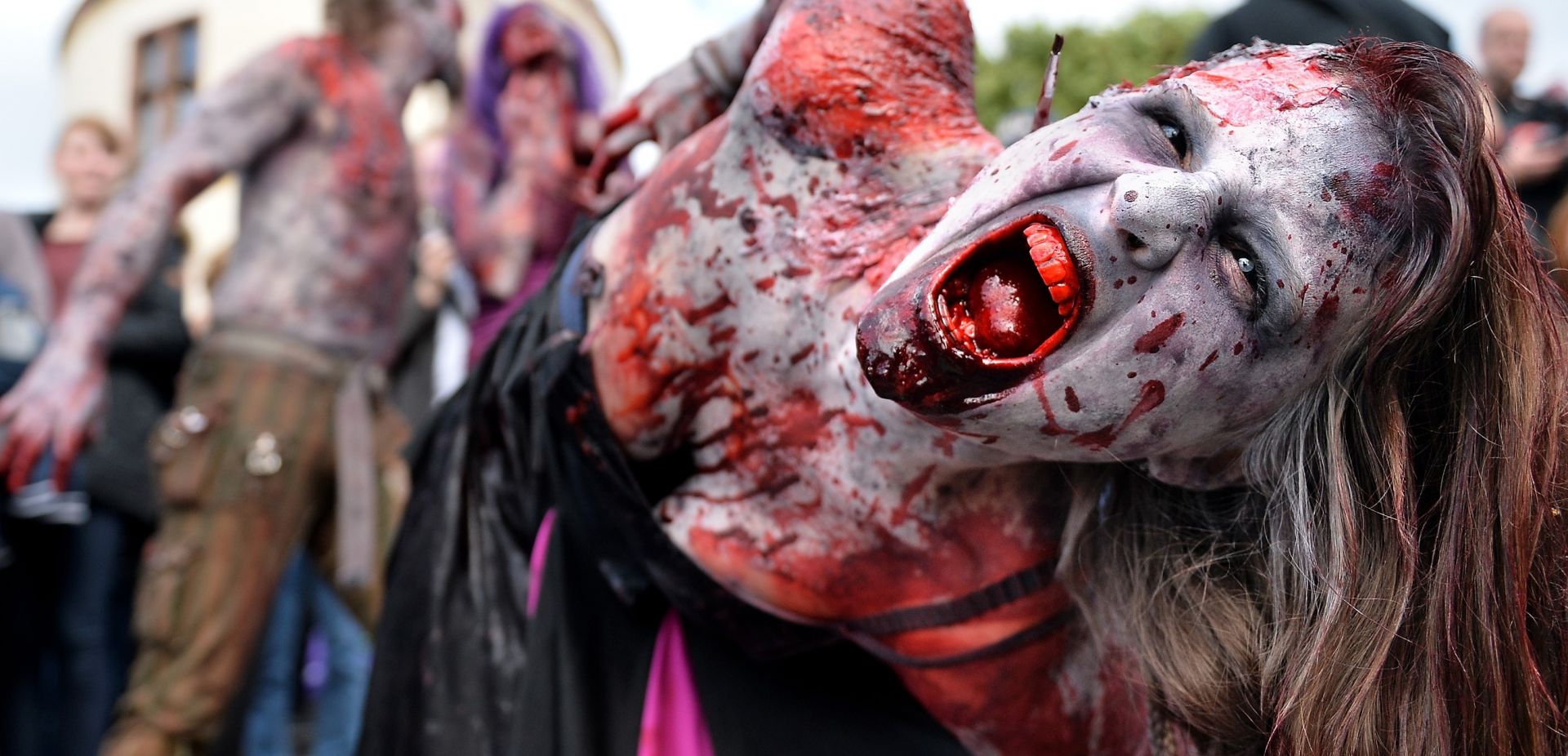
 SIGN UP TO OUR PAGE
SIGN UP TO OUR PAGE
 She also points out that in popular culture, the 'living dead' have displaced vampires in recent years. "The vampire has gone out of fashion. In contemporary plots, the figure has been transformed into a beautiful lover. The image of the vampire has been greatly softened by romance narratives or the Twilight series," stresses Professor Ksenia Olkusz.
She also points out that in popular culture, the 'living dead' have displaced vampires in recent years. "The vampire has gone out of fashion. In contemporary plots, the figure has been transformed into a beautiful lover. The image of the vampire has been greatly softened by romance narratives or the Twilight series," stresses Professor Ksenia Olkusz.